#Jurōjin
Explore tagged Tumblr posts
Text

~
#loki#Bishamonten#Ebisu#Daikokuten#Benzaiten#Hoteison#Jurōjin#Fukurokuju#loki ror#record of ragnarok#record of ragnarok loki#ror loki#shuumatsu no valkyrie#snv loki#loki record of ragnarok#shuumatsu no valkyrie loki#snv#seven lucky gods
26 notes
·
View notes
Text

Jurōjin
God of longevity
Seven Lucky Gods
2 notes
·
View notes
Photo

Case (Inrō) with Design of God of Longevity (Jurōjin) beside Flowering Plum Tree (obverse); Karako Walking on Bridge (reverse). 19th century. Credit line: Bequest of Benjamin Altman, 1913 https://www.metmuseum.org/art/collection/search/58625
#aesthetic#art#abstract art#art museum#art history#The Metropolitan Museum of Art#museum#museum photography#museum aesthetic#dark academia
9 notes
·
View notes
Photo

Jurōjin Mounted on His Stag, by Keisuke, late 19th century, Japan
84 notes
·
View notes
Text
Could this character be a god?
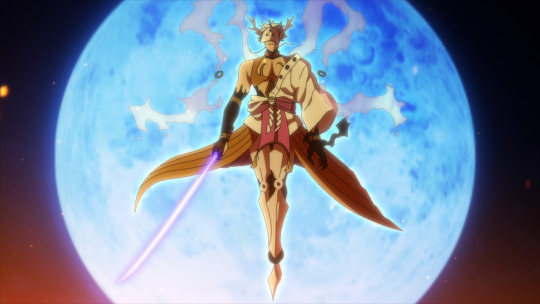
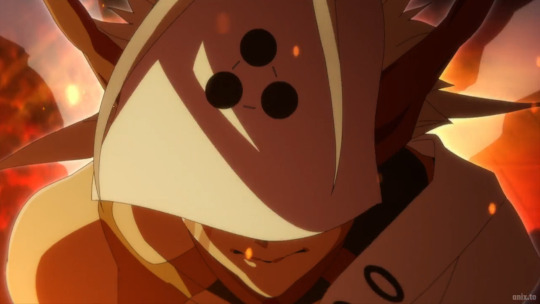
Magical Floating Shawl (hagoromo)
In Japanese media, the raiment is called hagoromo (translated to "feather robe"), or tenne, and is usually worn by supernatural beings, such as youkai, demons, gods, ascended humans, angels, etc. (source)

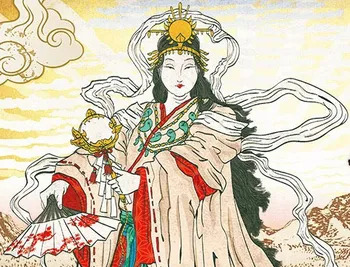
Left: Fūjin, the wind god. Right: Amaterasu, goddess of the sun.
Antlers and Horns in Japanese Folklore
Kirin:
The kirin is one of the rarest, most awesome and powerful creatures ever known in East Asia. It is a regal animal, holy and highly revered. The kirin is often considered a god in its own right. Resembling a deer with scales like a dragon’s covering its body, the kirin is a chimerical beast. (source)
Sacred Deer:
"In Japan, Jurōjin (寿老人) is one of the Seven Gods of Fortune or Shichifukujin, according to Taoist beliefs. He is the god of longevity. ... The deer, a symbol of longevity, usually (but not always) accompanies him as a messenger..." (source)
"Deer are considered messengers to the gods in Shinto, especially Kasuga Shrine in Nara Prefecture where a white deer had arrived from Kashima Shrine as its divine messenger." (source)
Horned Gods and Yokai: various strong gods and yokai in Japanese mythology are depicted with horns.
"Raijin, the god of thunder, is often depicted with a unique appearance. He is shown as having a muscular and fierce build, with horns on his head and sharp claws." (source)
"Fujin, the god of wind ... is represented as a muscular demon with a horned red face and a fierce expression." (source)
"The Oni, a more threatening group of spirits, may have originated in China and traveled to Japan with Buddhism. These horned demons, often of enormous size, can take human or animal shape." (source)
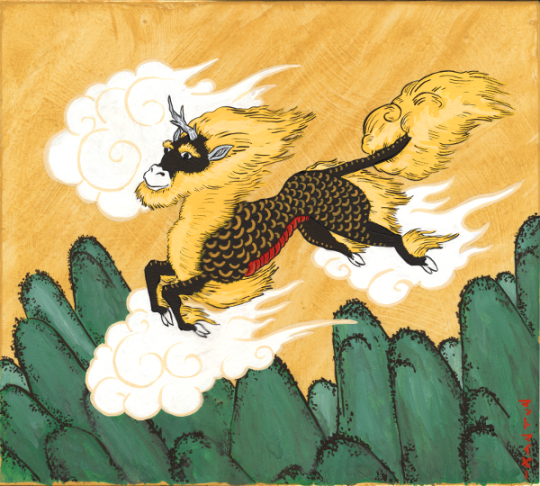
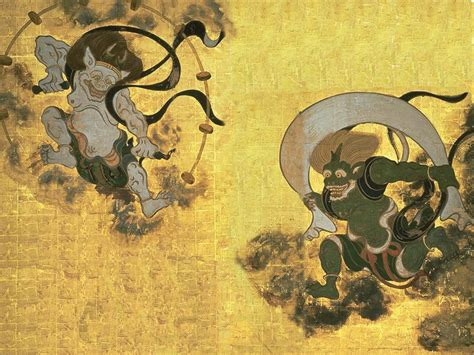
Left: Kirin. Right: Raijin and Fujin fighting.
Masks
"Masks have been used in Japan for centuries, with their usage dating back to at least the 6th century. Traditionally, masks were used in religious ceremonies or rituals, as well as for protection from evil spirits. In more recent times, masks have been used for a variety of purposes, including as part of traditional Japanese theater, in festivals and carnivals, and even as everyday fashion accessories." (source)
In the manga series Natsume Yuujinchou, masks are worn when the protagonist, Natsume, needs to hide the fact he is a human and blend in with the yokai, spirits, and gods he encounters. Many of the masks and disguises he wears incorporate antlers and horns as well.

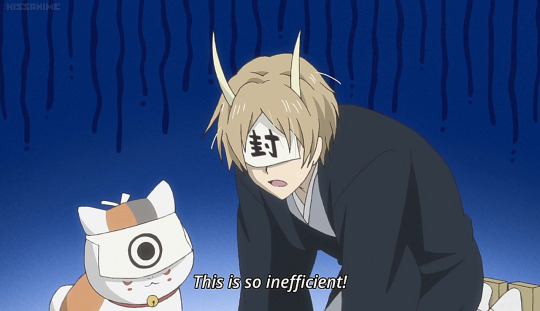
Shide
"Shide (紙垂, 四手) are zigzag-shaped paper streamers, often seen attached to shimenawa or tamagushi to demarcate holy spaces, and used in Shinto rituals in Japan. They are usually found adorning doorways, shrine buildings, and kamidana." (source)


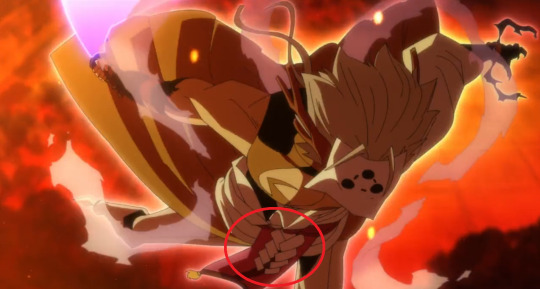
Tori Gates
"A torii is a traditional Japanese gate most commonly found at the entrance of or within a Shinto shrine, where it symbolically marks the transition from the mundane to the sacred and a spot where kami are welcomed and thought to travel through. The presence of a torii at the entrance is usually the simplest way to identify Shinto shrines, and a small torii icon represents them on Japanese road maps." (source)


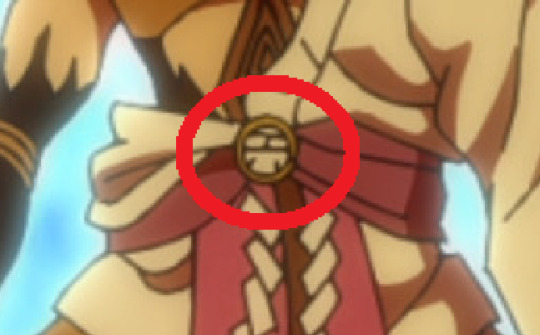
Shinto Symbols
I'm not sure what symbol is on the character's mask, but because there are so many Shinto influences in his design I am assuming the symbol has a similar origin. The closest symbol I was able to find is called a Tomoe.
"The Tomoe is a design that resembles a comma, and is a common design element in Kamon, Japanese family crests, that could be viewed upon the back banners often held by Samurai. This specific Tomoe is called a Mitsudomoe, a three-fold Tomoe, and is perhaps one of the most widely recognisable. Some believe it to be the representation of the threefold division (man, earth and sky) at the heart of Shintoism..." (source)
Below is a chart with variations of the Tomoe symbol:
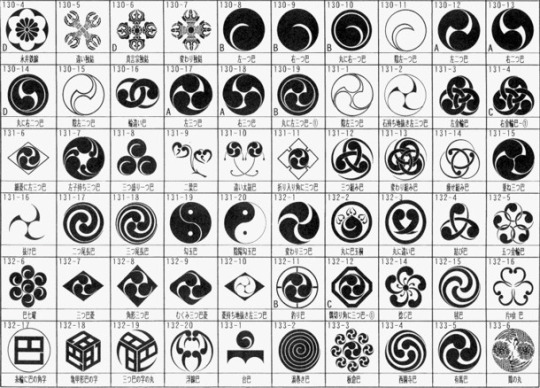
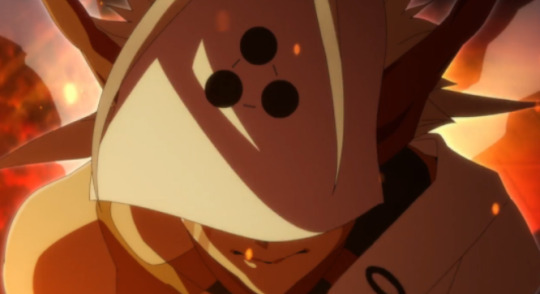
#bungo stray dogs#bungou stray dogs#bsd#season 5#spoilers#fan theory#shinto symbols#I also just figured out that Mishima Yukio was a Shintoist#which only makes me hope that Sigma is the god character who is Mishima Yukio#but it is probably all just me reading into things too much and my wishful thinking
49 notes
·
View notes
Text

The Seven Lucky Gods and their other selves (possibly)
Hotei = Kaishi
Ebisu = Hiruko
Benten = Saraswati
Bishamonten = Vaiśravana
Daikoku = Mahakala/Okuninushi
Jurōjin = Old Man of the South Pole
Fukurokuju = mythical Chinese Taoist hermit sage (?)
5 notes
·
View notes
Text
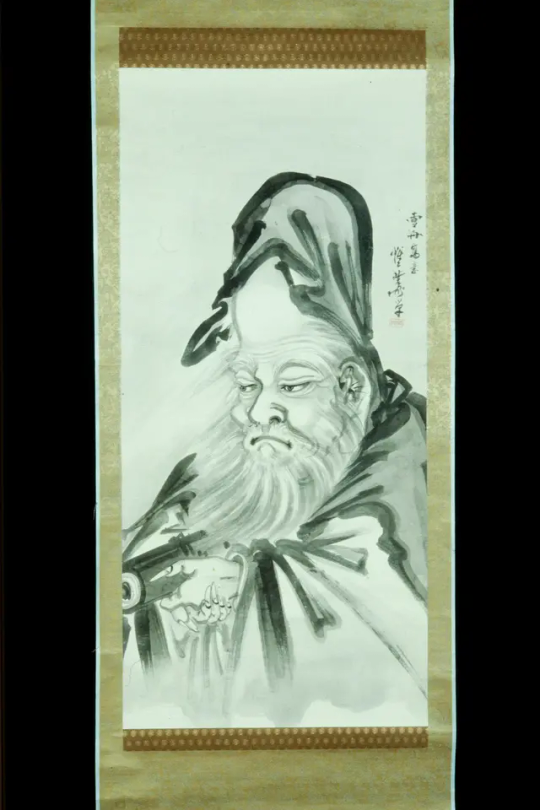
Jurōjin, 1884
Kawanabe Kyōsai
2 notes
·
View notes
Text

Jurōjin Mounted on His Stag,by Keisuke,late 19th century
1 note
·
View note
Photo

Crane and Pine, from a triptych of Jurōjin and Cranes, Spurious signature and seal of Kano Tsunenobu, 18th-19th century, Minneapolis Institute of Art: Japanese and Korean Art
Right scroll of a triptych. Crane with outsretched neck calling out toward left, framed by pine boughs at right. Size: 65 x 11 1/2 in. (165.1 x 29.21 cm) (mount) 36 x 12 in. (91.44 x 30.48 cm) (image) Medium: Ink and color on silk
https://collections.artsmia.org/art/8661/
23 notes
·
View notes
Text
Japanese divinities ✨
Shinto✨
Major kami✨
•Ama-no-Uzume (天宇受売命)
Commonly called Uzume, she is the goddess of dawn and revelry, instrumental to the "missing sun legend" in Shinto. She is also known as The Great Persuader and The Heavenly Alarming Female.
•Amaterasu-ō-mi-kami (天照大神 or 天照大御神)
Commonly called Amaterasu, she is the goddess of the sun as well as the purported ancestress of the Imperial Household of Japan. Her full name means "Great Goddess" or "Great Spirit Who Shines in the Heavens"; she may also be referred to as Ōhiru-menomuchi-no-kami (大日孁貴神). Due to her ties to the Imperial family, she is often considered (though not official) to be the "primary god" of Shinto.
•Ame-no-Koyane (天児屋命 or 天児屋根命)
A male deity, he is considered the "First in Charge of Divine Affairs", as well as the aide to the first Emperor of Japan.[1] He is also considered to be the ancestor of the Fujiwara family.
•Fujin (風神)
Also known as Kaminokaze, he is the Japanese god of the wind and one of the eldest Shinto gods, said to be present at the creation of the world. He is often depicted as an oni with a bag slung over his back.
•Hachiman (八幡神)
Also known as Hachiman-shin or Yawata no kami, he is seen as the god of war. Originally an agricultural deity, he later became the guardian of the Minamoto clan.
•Inari (稲荷)
The god of rice and fertility. His messengers and symbolic animal are foxes. He is often identified with the Buddhist deity Dakiniten. Though traditionally represented as a male, there are records of Inari appearing as a female as well.
•Izanagi (伊弊諾 or 伊邪那岐)
The forefather of the gods, he is the first male as well as the god of creation and life. He and his wife, Izanami, were responsible for the birth of the islands of Japan and many kami, though she died in childbirth. Later, after his failed attempt to retrieve her from the underworld, he sired Amaterasu, Susano and Tsukuyomi.
Izanami (伊弉冉 or 伊邪那美)
•Izanagi's wife and sister, she is the first female as well as the goddess of creation and death. She died shortly after the birth of Kagu-tsuchi, and Izanami followed her to the underworld, but failed to bring her back to the living world. A marital spat between the pair caused the cycle of life and death for all living beings.
•Ninigi-no-Mikoto (瓊瓊杵尊)
Commonly called Ninigi, he was the grandson of Amaterasu. His great-grandson was Kamuyamato Iwarebiko, later to be known as Emperor Jimmu, first emperor of Japan.
•Raijin (雷神)
Commonly called Raiden (雷電), he is the god of thunder and lightning, and is often paired with Fujin. As with the latter, Raijin is usually depicted as an oni.
•Ryūjin (龍神)
Also known as Rinjin, he is a dragon, as well as god of the sea. He resides in Ryūgū-jō, his palace under the sea built out of red and white coral, from where he controlled the tides with magical tide jewels. His great-grandson would become Emperor Jimmu.
•Susanoo-no-mikoto (須佐之男命)
Alternately romanized as Susano-o, Susa-no-o, and Susanowo. He is the god of storms as well as in some cases the god of the sea. He is also somewhat of a trickster god, as Japanese mythology extensively documents the "sibling rivalry" between him and Amaterasu. Susanoo also was responsible for the slaying of the monster Yamata-no-Orochi and the subsequent discovery of the sacred sword Kusanagi.
•Tenjin (天神)
The god of scholarship, he is the deified Sugawara no Michizane (845-903), who was elevated to his position after dying in exile and subsequent disasters in Heian-kyō were attributed to his angered spirit. See Dazaifu, Fukuoka
•Toyotama-hime (豊玉姫)
Also known as Otohime (乙姫), she was the daughter of Ryūjin and the grandmother of Jimmu. It is said that after she gave birth to her son, she turned into a dragon and disappeared.
•Tsukuyomi-no-Mikoto (月読の命 or 月夜見の尊)
Also known as Tsukiyomi, Tsuki no kami, Tsukiyomino mikoto, and Tsukiyumi no mikoto, he is the god of the moon. He killed the goddess of food, Uke Mochi, out of disgust and anger in the way she had prepared a meal. This caused Amaterasu to never face him again, causing the sun and moon to be in different parts of the sky.
Minor kami✨
•Amatsu-Mikaboshi (天津甕星), the kami of all evil and stars who existed before Ama-No-Uzume
•Konohanasakuya-hime (木花之開耶姫), the wife of Ninigi and daughter of Ohoyamatsumi, and great-grandmother of Jimmu. She is also known as the goddess of Mount Fuji.
•Ohoyamatsumi (大山積命), an elder brother of Amaterasu, and an important god who rules mountain, sea, and war, as well as the father of Konohanasakuya-hime.
•Sarutahiko Ohkami (猿田毘古神), a kami of the Earth that guided Ninigi to the Japanese islands
•Uke Mochi (保食神), sometimes called Ogetsu-hime-no-kami, a goddess of food. After she had spat a fish, vomited or defecated game and coughed rice, she had been killed by a disgusted Tsukuyomi, or in some other versions, Susanoo.
Buddhism✨
•Amida Nyorai (無量光佛 or 無量壽佛)
Commonly referred to as Amida-butsu (阿弥陀如来), he is the primary Buddha of the Pure Land school of Buddhism. He is also believed to be a Buddha who possesses infinite meritorious qualities; who expounds the dharma in his pure paradise and is likely the most well known and popular of the Five Wisdom Buddhas.
•Daruma (ダルマ)
He is traditionally held in Buddhist mythology to be the founder of Zen Buddhism, as well as the founder of Shaolin. One legend reports that after years of meditation, Bodhidharma lost the usage of his eyes and appendages. The Daruma doll was created in honor of this legend.
The Seven Lucky Gods✨
•Benzaiten (弁才天 or 弁財天)
Also known as Benten, she is the goddess of everything that flows: words (and knowledge, by extension), speech, eloquence, and music. Said to be the third daughter of the dragon-king of Munetsuchi, over the course of years she has gone from being a protective deity of Japan to one who bestows good fortune upon the state and its people.Derived from the equivalent goddess in Hinduism Goddess Saraswati.
•Bishamonten (毘沙門天)
Also called Bishamon or Tamonten, he is the god of fortunate warriors and guards, as well as the punisher of criminals. Said to live halfway down the side of Mount Sumeru, the small pagoda he carries symbolizes the divine treasure house that he both guards and gives away its contents.
•Daikokuten (大黒天)
Often shortened to simply Daikoku, he is variously considered to be the god of wealth (more specifically, the harvest), or of the household (particularly the kitchen). He is recognised by his wide face, smile, and flat black hat. He is often portrayed holding a golden mallet, seated on bales of rice, with mice nearby (which signify plentiful food).
•Ebisu (恵比須, 恵比寿, 夷 or 戎)
The sole member of the gods believed to have originated in Japan, he was originally known as Hiruko (蛭子), the first child of Izanagi and Izanami. Said to born without bones, he eventually overcame his handicaps to become the mirthful and auspicious Ebisu (hence one of his titles, "The Laughing God"). He is often depicted holding a rod and a large red bream or sea bass. Jellyfish are also associated with this god and the fugu restaurants of Japan will often incorporate Yebisu in their motif.
•Fukurokuju (福禄寿)
Often confused with Jurōjin, he is the god of wisdom and longevity and said to be an incarnation of the Southern Polestar. He is accompanied by a crane and a turtle, which are considered to be symbols of longevity, and also sometimes accompanied by a black deer. The sacred book tied to his staff is said to contain the lifespan of every person on Earth.
•Hotei (布袋)
Best known in the Western world as the Laughing Buddha, Hotei is likely the most popular of the gods. His image graces many temples, restaurants, and amulets. Originally based on a Chinese Chan monk, Hotei has become a deity of contentment and abundance.
• Kichijōten (吉祥天)
Also known as Kisshōten or Kudokuten, she is the "eighth" member of the Seven Gods of Fortune, a Taoist deity often combined with the traditional members. She is considered to be the goddess of happiness, fertility, and beauty.
• Jurōjin (寿老人)
Also known as Gama, he represents longevity. He is often seen with a fan and a stave, and accompanied by a black deer.
30 notes
·
View notes
Photo

The Seven Lucky Gods - Ebisu, Hotei, Benzaiten, Bishamonten, Daikokuten, Jurōjin, and Fukurokuju
6 notes
·
View notes
Photo



A MAGNIFICENT KAWARI KABUTO, EDO PERIOD, 17TH CENTURY
The iron helmet of six lobes in the form of the head of Jurōjin, boldly modelled and decorated overall in black lacquer, the eyes decorated in gold hiramaki-e, four tier shikaro with black lacing.
Sotheby’s
39 notes
·
View notes
Text
MYTHOS UNIVERSITY
Hidden from the rest of the world (for the safety of the normal humans and creatures) this university are where the children of gods and goddesses , as well as monsters, learn to control their powers as well as learn other subjects. There has always been some sort of competition between the monsters and demigods, to see which was more superior to each other. For years the demigods looked down upon the monsters, but in these highschools everyone is treated equally. However there is bound to be some sort of rivalry between the two. Each of the dorms have a rivalry going on with each other and it's not unusual to see them pulling pranks or boasting about who's better.
GREEK DEMIGOD DORMS
( Helios︱Poseidon︱Artemis︱Aphrodite︱Apollo︱Hermes︱Hades︱Athena︱Ares︱Astraea︱Calliope︱Cerus︱Persephone︱Clio︱demeter︱dionysus︱erato︱euterpe︱hephaestus︱Hera︱Zeus︱Hestia︱Kratos︱Eros︱pandora︱ melpomene︱Nike︱Nyx︱Selene︱Styx︱typhon︱urania︱Thanatos︱Zephyrus︱Psyche︱Iris︱Achelous︱Pan/ Erichthonius︱Hecate︱ Nemesis/ morpheus︱Hypnos︱dike︱Moros | Phobetor | Icarus)
JAPANESE DEMIGOD DORMS
( Izanagi︱Raijin︱Ebisu︱Fūjin︱Daikokuten︱Kagu-tsuchi︱Fukurokuju︱Hachiman︱Sarutahiko Ōkami︱Ōkuninushi︱Jurōjin︱Susanoo-no-Mikoto︱Ninigi-no-Mikoto︱Ryūjin /Kōjin︱Amatsumikaboshi︱Hoori︱Ame-no-Koyane︱Amaterasu/ Inari)
CELTIC DEMIGOD DORMS
( The Morrigan ︱Brighild︱Cailleach︱Cernunnos︱Cerridwen︱The Dagda︱Herne︱Lugh︱Rhiannon︱Taliesin︱Scáthach︱Cú Chulainn︱Donn︱Aengus︱Lugus︱Ériu︱ Dian Cécht︱ Cían ︱Danu︱Étaín ︱Cicolluis︱Belenus︱Clota︱Áine︱ Cathubodua︱Carman ︱Dub ︱Dother | Mebd | Dain | Aoibheal)
MONSTER DORMS
( Lich / Lich |Cerberus︱Medusa︱Harpy︱Arachne︱Pegasus︱Scylla︱Siren︱Cyclops︱Chimera︱Centaur︱Hydra︱Minotaur︱Stayr ︱Griffin | Vrykolakas | Charybdis︱ Phoenix | Leprechaun︱Banshee︱Abhartach︱Kelpie︱Selkie︱Aos Sí︱Gancanagh︱Dullahan︱Púca︱Dearg Due︱Sluagh︱Caorthannach︱Leanan Sidhe︱Questing Beast︱Caoranach | Changling︱ Black Dog ︱Coinchenn | Baku︱Kitsune ︱Shokuin︱raijū ︱ Jinja hime︱Ōmukade︱kotobuki︱shussebora︱Kōjin︱Abe no Seimei︱Seiryū ︱Tatarigami︱Ōnamazu︱Wani ︱Kappa ︱Tengu︱ Oni )
Teachers
( Dark arts︱Theater︱Dance︱Mathematics︱Art︱Sex ed︱Choir︱History/Geography︱Power management︱Sxience︱Language arts︱Shakespeare︱Mythology︱Magic︱music︱gym/physical education︱Metalwork︱Archery/Survival Skills︱Home ec ︱Psychology︱Toxicology ︱Biology/ Anatomy ︱Criminal Justice ︱Philosophy ︱Battle Strategies/Sparring )
Rules
Reply to this post to claim a monster/demigod.
No more than two of the same monster/demigod can be used.
Be kind to one another, if you are not you will be removed from the bandwagon.
Limit of two characters to a person, if this gets more popular the limit will increase.
You can suggest more mythos as the bandwagon gets bigger!
If you join, we have a discord you can join as well!
4 notes
·
View notes
Text

The Hargreeves Children
Japanese Gods and Goddesses Series
.
Number Five: 寿老人 (Jurōjin)
.
Symbolises wisdom and longevity. Often seen with a turtle, stag or crane. He has a scroll tied to his staff, on which is written the lifespan of all living things
.
Original Photo Source: Unknown
*Some writing in the description is taken from Wikipedia, please inbox me if the information is miscommunicated or wrong*
Also please inform me if the Japanese naming is not correct 👍🏻
Artist Edit: tua-kh-appreciation
#tua#the umbrella academy#number five#the boy#aiden gallagher#dark horse comics#own edit#character aesthetics#japanese mythology
7 notes
·
View notes
Photo



Eight Daoist Immortals Welcoming Jurōjin
17th century, Japan
"In this diptych (with 14.76.53), some of the revered Eight Daoist Immortals of ancient China look skyward to watch the god of longevity, Shaolaoren (known in Japanese as Jurōjin), descend from above on a crane." MET
255 notes
·
View notes
Note
there is probably a post about this. but great knower of uzumakis ... what is their religion like? go into depth for that... :^)
OKAY SO this might be all over the place , but basis is something similar to shinto. not the exact same but very, very close. uzushiogakure has priestesses ( hence force known as miko to keep words straight but uzu calls them just priestesses ) / @viralwill
In Shinto, a miko (巫女) is a shrine (jinja) maidenor a supplementary priestess. Miko were once likely seen as a shaman but are understood in modern Japanese culture to be an institutionalized role in daily shrine life, trained to perform tasks, ranging from sacred cleansing to performing the sacred Kagura dance.Miko once performed spirit possession and takusen as vocational functions in their service to shrines. As time passed, they left the shrines and began working independently in secular society. Miko at shrines today do no more than sit at reception counters and perform kagura dance. In addition to a medium or a miko (or a Geki, which is a male shaman), the site of a takusen may occasionally also be attended by a sayaniwa who interprets the words of the possessed person to make them comprehensible to other people present. Kamigakari and takusen may be passive, when a person speaks after suddenly becoming involuntarily possessed or has a dream revelation; they can also be active, when spirit possession is induced in a specific person to ascertain the divine will or gain a divine revelation.
Uzushio Miko still performed spirit possessions which with a background with fuinjutsu – helps them trap the gods into masks – ( which konoha + other’s ended up ripping off but that’s a discussion for another time ! )
where as a traditional Miko would wear :
The traditional attire of a miko would be a pair of red hakama (long, divided trousers) or a long, red, slightly pleated skirt tied with a bow, a white haori (kimono jacket), and some white or red hair ribbons. In Shintoism, the color white symbolizes purity.
Traditional Miko tools include azusayumi (梓弓 or “catalpa bow”) the tamagushi (玉串 or “offertory sakaki-tree branches”) and the gehōbako (外法箱 or the “supernatural box that contains dolls, animal and human skulls … [and] Shinto prayer beads”).
The miko also use bells, drums, candles, and bowls of rice in ceremonies.
an Uzushio Miko would wear something that is easily moved in , easily danced in , and can withstand water – and their attire is colourful with oranges , reds , blues.
Their MAIN Gods/ Goddesses:
Amaterasu-Ō-Mi-Kami (天照大神 or 天照大御神) Commonly called Amaterasu, she is the goddess of the sun as well as the purported ancestress of the Imperial Household of Japan. Her full name means “Great Goddess” or “Great Spirit Who Shines in the Heavens”; she may also be referred to as Ōhiru-menomuchi-no-kami (大日孁貴神). For many reasons, one among them being her ties to the Imperial family, she is often considered (though not officially) to be the “primary god” of Shinto.
Ame-no-Uzume (天宇受売命 or 天鈿女命) Commonly called Uzume, she is the goddess of dawn and revelry, instrumental to the “missing sun motif” in Shinto. She is also known as The Great Persuader and The Heavenly Alarming Female.
Fūjin (風神) Also known as Kami-no-Kaze, he is the Japanese god of the wind and one of the eldest Shinto gods, said to have been present at the creation of the world. He is often depicted as an oni with a bag slung over his back.
Inari Ōkami (稲荷大神) The god or goddess of rice and fertility. Their messengers and symbolic animal are foxes. They are often identified with the Ukanomitama and Buddhist deity Dakiniten.
Raijin (雷神) Commonly called Raiden (雷電), he is the god of thunder and lightning, and is often paired with Fūjin. As with the latter, Raijin is usually depicted as an oni.
Ryūjin (龍神) Also known as Ōwatatsumi, he is a dragon, as well as god of the sea. He resides in Ryūgū-jō, his palace under the sea built out of red and white coral, from where he controls the tides with magical tide jewels. His great-grandson would become Emperor Jimmu.Suijin (水神) The God of Water.
Susanoo-no-Mikoto (須佐之男尊) Alternately romanized as Susano-o, Susa-no-o, and Susanowo. Reportedly called “Futsushi”. He is the god of storms as well as in some cases the god of the sea. He is also somewhat of a trickster god, as Japanese mythology extensively documents the “sibling rivalry” between him and Amaterasu. Susanoo also was responsible for the slaying of the monster Yamata no Orochi and the subsequent discovery of the sacred sword Kusanagi.
Azumi-no-isora (阿曇磯良) is a kami of the seashore. He is considered to be the ancestor of the Azumi people.
As well as those God(desses) , they also believe in the Seven Lucky Gods:
Benzaiten (弁才天 or 弁財天) Also known as Benten or Benzaitennyo, she is the goddess of everything that flows: words (and knowledge, by extension), speech, eloquence, and music. Said to be the third daughter of the dragon-king of Munetsuchi, over the course of years she has gone from being a protective deity of Japan to one who bestows good fortune upon the state and its people. Derived from Saraswati, the equivalent Hindu goddess.[citation needed]
Bishamonten (毘沙門天) Also called Bishamon or Tamonten, he is the god of fortunate warriors and guards, as well as the punisher of criminals. Said to live halfway down the side of Mount Sumeru, the small pagoda he carries symbolizes the divine treasure house that he both guards and gives away its contents.
Daikokuten (大黒天) Often shortened to simply Daikoku, he is variously considered to be the god of wealth (more specifically, the harvest), or of the household (particularly the kitchen). He is recognised by his wide face, smile, and flat black hat. He is often portrayed holding a golden mallet, seated on bales of rice, with mice nearby (which signify plentiful food). Daikoku sometimes manifests as a female known as Daikokunyo (大黒女) or Daikokutennyo (大黒天女). When Kisshoutennyo is counted among the seven Fukujin[4] and Daikoku is regarded in feminine form, all three of the Hindu Tridevi goddesses are represented in the Fukujin.
Ebisu (恵比須, 恵比寿, 夷 or 戎) The sole member of the gods believed to have originated in Japan, he was originally known as Hiruko (蛭子), the first child of Izanagi and Izanami. Said to be born without bones, he eventually overcame his handicaps to become the mirthful and auspicious Ebisu (hence one of his titles, “The Laughing God”). He is often depicted holding a rod and a large red sea bream or sea bass. Jellyfish are also associated with this god and the fugu restaurants of Japan will often incorporate Yebisu in their motif.
Fukurokuju (福禄寿) Often confused with Jurōjin, he is the god of wisdom and longevity and said to be an incarnation of the Southern Polestar. He is a star god accompanied by a crane and a turtle, which are considered to be symbols of longevity, and also sometimes accompanied by a black deer. The sacred book tied to his staff is said to contain the lifespan of every person on Earth.
Hotei (布袋) Best known in the Western world as the Laughing Buddha, Hotei is likely the most popular of the gods. His image graces many temples, restaurants, and amulets. Originally based on a Chinese Chan monk, Hotei has become a deity of contentment and abundance.
Jurōjin (寿老人) Also known as Gama, he represents longevity. He is often seen with a fan and a stave, and accompanied by a black deer.
The goddess Kichijōten (吉祥天), also known as Kisshoutennyo, is sometimes considered to be one of the seven gods,[3] replacing either Jurōjin or Fukurokuju.[4] She embodies happiness, fertility, and beauty.
There’s a belief that each Uzumaki is blessed by one of the god(desses) listed above – and if they aren’t blessed , then they are cursed like karin’s great grandfather who was cursed with a bite-heal technique.
37 notes
·
View notes